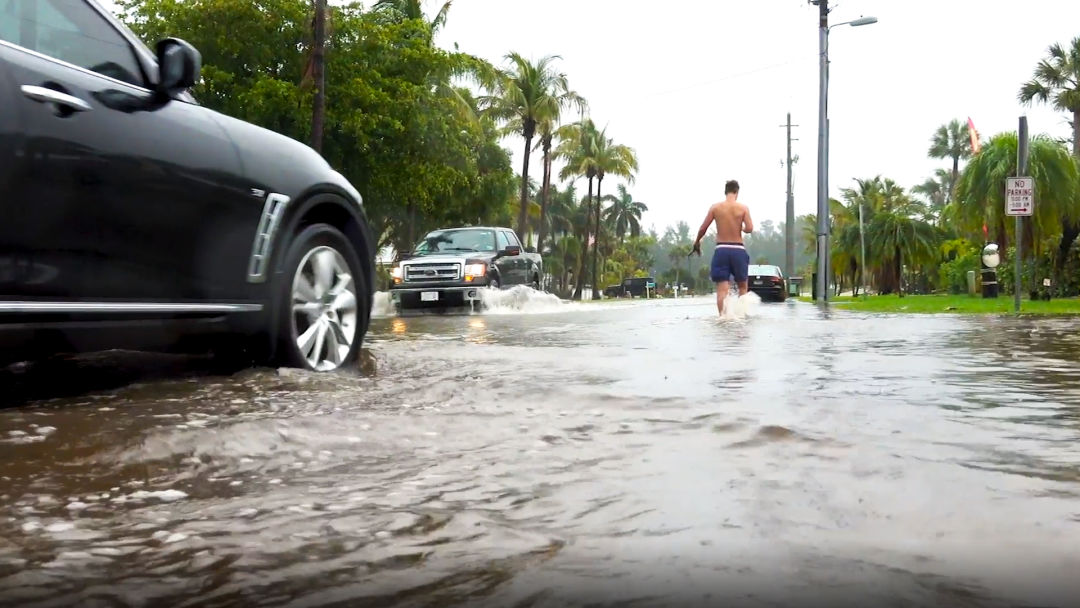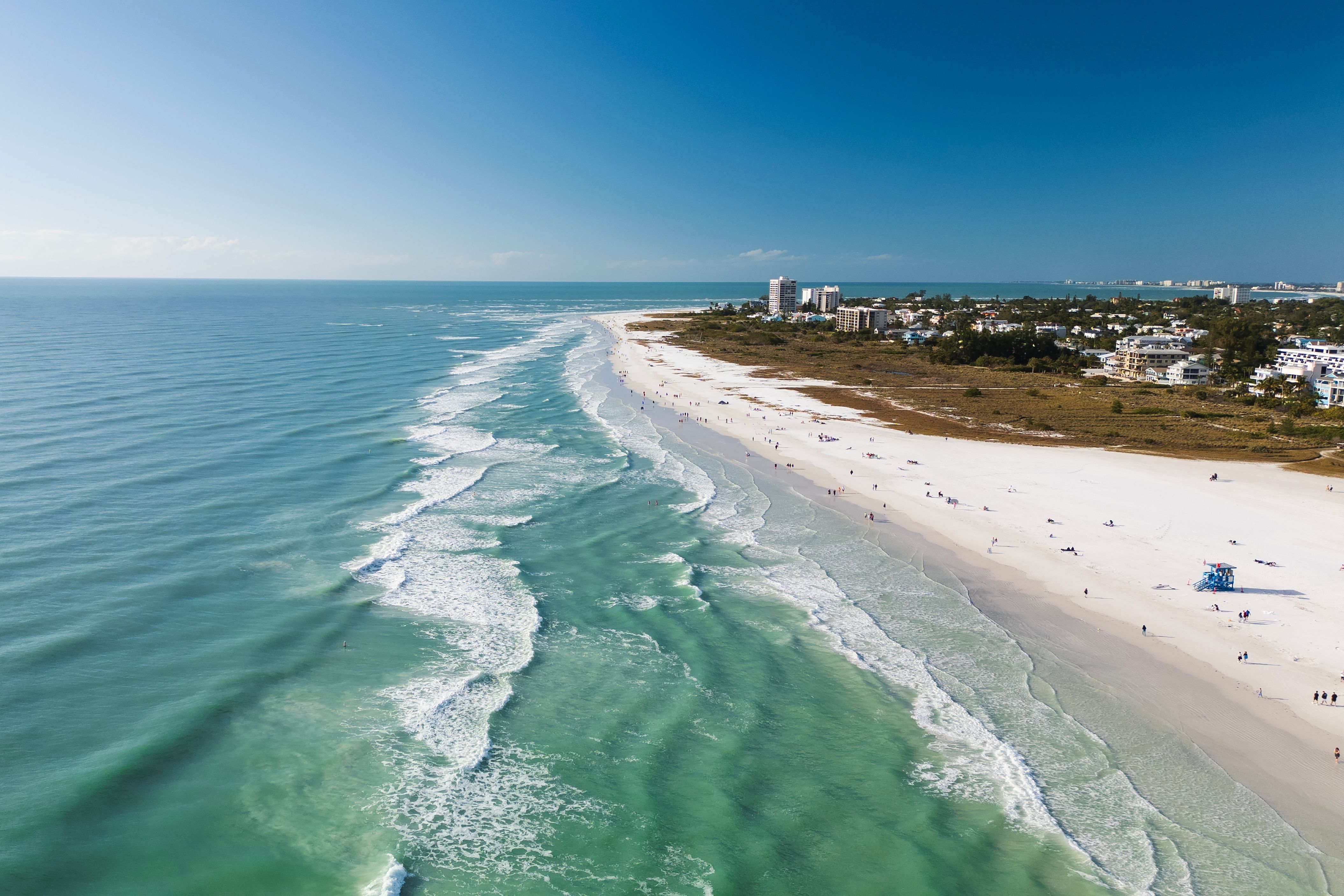Flood Insurance Rates Set to Spike for Some Florida Residents

FEMA's federal flood insurance program is responding to rising sea levels and hurricanes. Residents who live in high risk flood zones in southwest Florida will be hit hardest.
Image: Mars Productions
One way Florida residents will have to adapt to climate change: paying more for flood insurance.
And that’s what’s in store starting Oct. 1. It’s part of what FEMA calls the 2.0 Risk Rating program that will, for the first time, take into account the size of a home and its distance from flood sources to calculate more accurate coverage rates.
Because of the new rate calculation, in parts of Florida, the cost of flood insurance will eventually increase tenfold, according to data obtained by The New York Times.
The article also highlighted that for roughly 25,000 single-family homes nationwide, additional costs could reach as high as $1,200. Almost half of those 25,000 households are in Florida, many of them along the string of high-risk barrier islands that run from St. Petersburg south to Fort Myers.
One ZIP code on Anna Maria Island leads the country in the number of single-family homes facing an increase of more than $1,200 a year. Siesta Key and Boca Grande may face similar hikes.
Created by Congress in 1968, FEMA’s National Flood Insurance Program is the primary provider of flood coverage, which isn’t often offered by private insurers. The program is funded by premiums from policyholders but can borrow money from the federal treasury to cover claims.
The maximum payout for residential structures is $250,000 in building coverage and $100,000 in contents coverage, often not enough to cover the full extent of flood damage, especially in the case of a hurricane.
"With the old system whether it was a million-dollar home or not, it was the same payout maximum," Matthew Britton, a local insurance agent who specializes in flood insurance says.
The program was heavily subsidized and the current rating methodology has not changed since the 1970s. Until now, the program has priced flood insurance policies based largely on whether a home is inside what’s called the 100-year flood plain–land expected to flood during a major storm. The result has been a program that subsidizes more affluent coastal homeowners at the expense of those with flood insurance policies who live further inland, in lower flood risk zones.
But over the years, technology has evolved and so has FEMA’s understanding of flood risk. Risk Rating 2.0 allows FEMA to calculate premiums more equitably across all policyholders based on the value of the home and an individual property’s flood risk.
“If you're right on the water versus inland, the rate shouldn't be the same. Calculations were more generic in the past. For example, there are structures that will continually be built in the same place where they had a flood. Why is FEMA still writing checks for those who continue to build there?" says David McMahon, a local insurance agent who has been with Atlas Insurance for almost 20 years.
Risk Rating 2.0 is part of a plan to bring the NFIP out of its $20 billion debt caused by paying out more than it collects.
The new program will strip its subsidies in a move to adapt to climate change marked by hurricanes battering communities with more frequency and strength along with rising sea levels.
According to Britton, a recent client’s flood insurance rates were $750 a year. When he quoted the client the new rate under the new program, it was $3,000. “They lived in Myakka by the river in a high-risk flood zone, and it’s a brand-new policy,” he said, “Homeowners in high-risk zones are going to see the most significant increase.”
The new system takes effect next month for people purchasing flood insurance for the first time. For customers with existing flood insurance policies, rates will increase starting next April.
"Cash buyers won't be mandated to have flood insurance, and some insurance companies require it, but very few. Most will accept a waiver that says you reject it," Britton says
Since federal law bars FEMA from raising flood insurance rates by more than 18 percent a year, it could take up to 20 years before some current homeowners are charged their full rates under the new system.
But the new rating system isn’t only about rates going up. According to Florida FEMA data, 20 percent of plans will decrease for those who were overpaying for their risk of flood. Almost 70 percent of plans will increase by no more than $120 a year; 8 percent will climb no more than $240 a year; and just 4 percent will grow by more than $240 a year.
However, according to First Street Foundation, a nonprofit research group focused on climate impacts on property value, the majority of Floridians face a higher flood risk than their insurance costs would indicate. According to the report, nine of the top 10 counties in terms of total estimated annual economic damage across the entire U.S. are in the state of Florida. At the top of this list is Broward County, with an estimated annual loss of $1.3 billion, accounting for roughly 16 percent of the state’s overall economic risk. Sarasota County came in at $485 million.
Risk Rating 2.0, which was initially scheduled to roll out in October 2020, was pushed back a year due to political pressure. This time around, U.S. representatives are urging another delay.
"I don't think you have to be a climate activist to figure this out. Just look at the reality of what's going on out there and that's hard to deny. From that standpoint, how do we get ahead of it?" says McMahon.
To learn more about your zip code's flood factor and history, click here. To learn more about your state-by-state flood profiles, click here.



